Looking for an easy-care, vining houseplant to add to your home but don’t want to go with boring ol’ Pothos? No worries, there are plenty of other tropical trailing houseplants out there.
One of my favorites is Scindapsus pictus, also known as satin Pothos (or even more confusingly, silver Philodendron—but I’ll get into that more below). Its velvety leaves with silver variegation make this one a beautiful addition to any plant collection.
Keep reading for everything you need to know about Scindapsus pictus care and how to grow this popular houseplant indoors!
| Common name(s) | Satin Pothos, silver Philodendron, Scindapsus Epipremnum, silver vine |
| Scientific name | Scindapsus pictus |
| Family | Araceae |
| Height and spread | 5+ feet high/long, 2+ feet wide |
| Light | Bright indirect |
| Soil type | Aroid soil |
| Water | Keep lightly moist |
Disclosure: If you shop from my article or make a purchase through one of my links, I may receive commissions on some of the products I recommend.
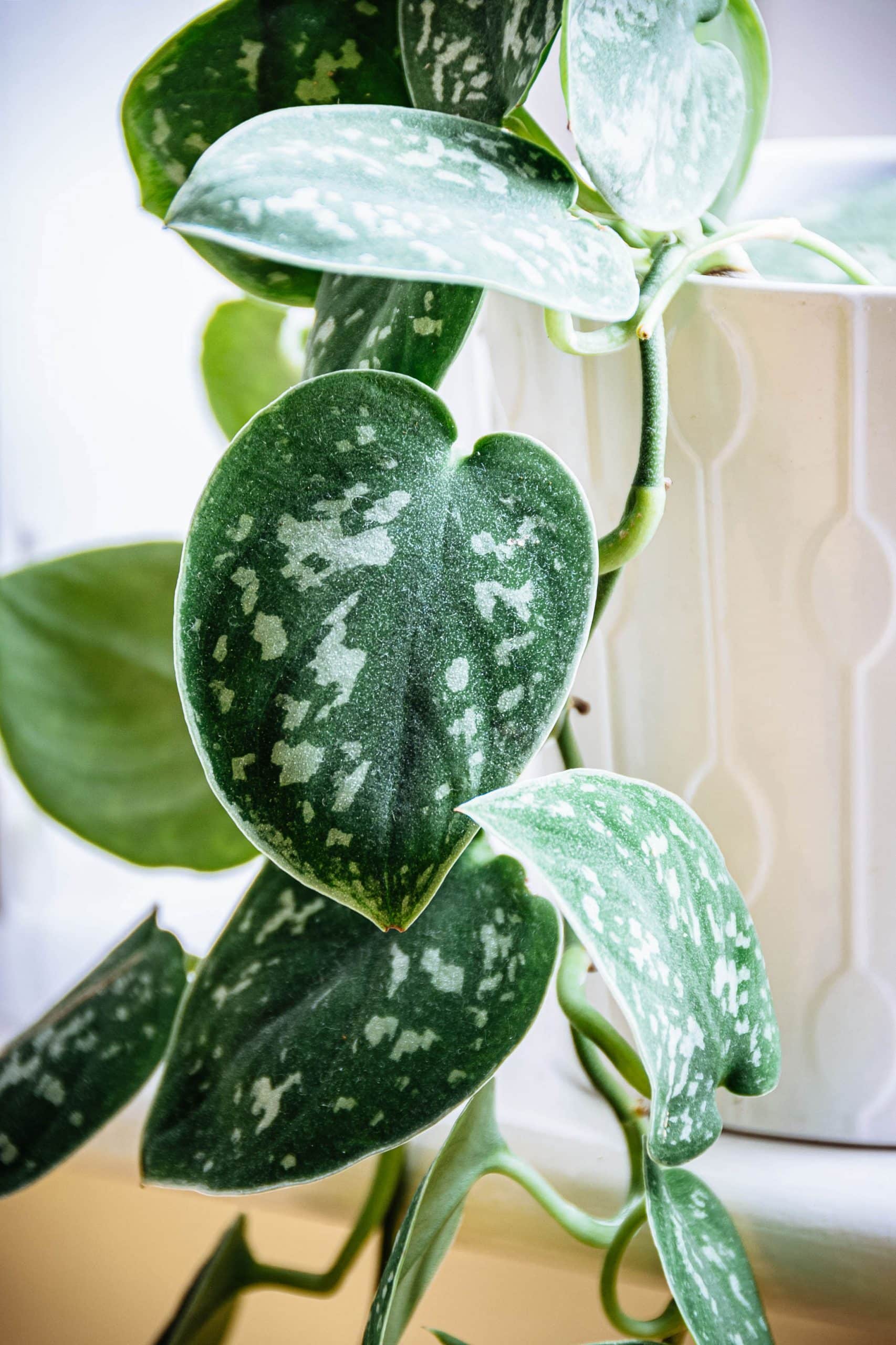
About Scindapsus pictus
Description
The satin Pothos or silver Philodendron (Scindapsus pictus) is a vining plant. You’ll see it sold in two different forms: either climbing, with the use of a moss pole, or hanging, with its long stems spilling downwards.
I’m not surprised by the fact that this species has been gaining plenty of popularity as a houseplant in recent years. It’s pretty and pleasing to look at, with slightly satiny leaves and dark green coloration that’s interspersed with silver variegation. No wonder they called it “pictus”, which means “painted” in Latin!
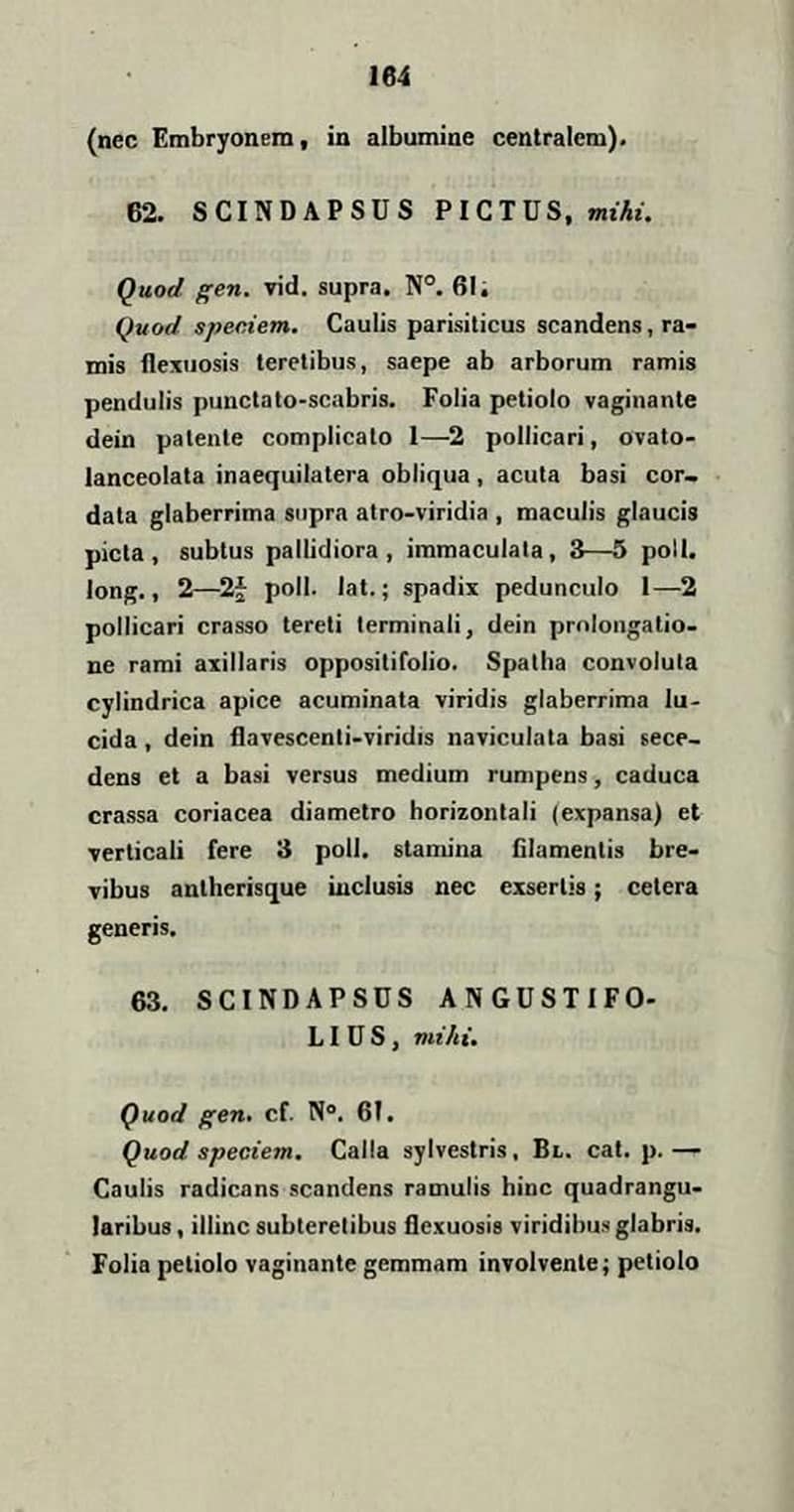
Depending on the cultivar and the way the plant is grown, Scindapsus pictus leaves can be up to 15 inches across.
As with other similar vining plants (like Rhaphidophora tetrasperma and Syngonium podophyllum), the foliage will become larger if you let the plant climb (its natural and preferred way to grow) and stay small if you let it hang (preferable for many houseplant enthusiasts because it’s easy to maintain and makes quite a statement).
Natural habitat
Scindapsus pictus is naturally found in Asia, where it has a pretty wide range, popping up as far west as India and as far east as the Philippines. It occurs in tropical rainforests, where it uses taller trees as support to help it climb towards the more brightly-lit forest canopy.
Although you almost never see it growing like this in the home, in its natural habitat, the satin Pothos actually uses its small but powerful aerial roots to grow in a shingling manner. This means the leaves are very tightly pressed against the tree trunk, similar to something like Monstera dubia or Rhaphidophora hayi, two common shingling houseplants you may have heard of.
In areas where trees are lacking, Scindapsus pictus may also end up vining across the forest floor in search of a surface to climb.
Scindapsus vs. Epipremnum
Let’s address the bit that has confused houseplant enthusiasts around the world ever since Scindapsus pictus began to soar in popularity a few years ago.
What in the world is up with the naming of this plant?!
As we’ve discussed, common names for this Aroid include satin Pothos and silver Philodendron.
But let’s clear things up: as nice as these names sound, they’re technically incorrect. Scindapsus pictus is neither a Pothos (vining plants known scientifically as Epipremnum aureum) nor a Philodendron (another genus of tropical trailing plants). They look a lot alike, and they form part of the same family, but they’re not the same plants.
You may also have seen the reverse. Occasionally, the popular golden Pothos (Epipremnum aureum) is labeled something like ‘Epipremnum Scindapsus’ or even ‘Scindapsus aureum’. Not correct! An Epipremnum is an Epipremnum, and a Scindapsus is a Scindapsus. But… how do you tell the difference?
Although these plants look quite similar to the untrained eye, it’s not difficult to learn how to tell them apart. The easiest way to do so is by looking at the leaves.
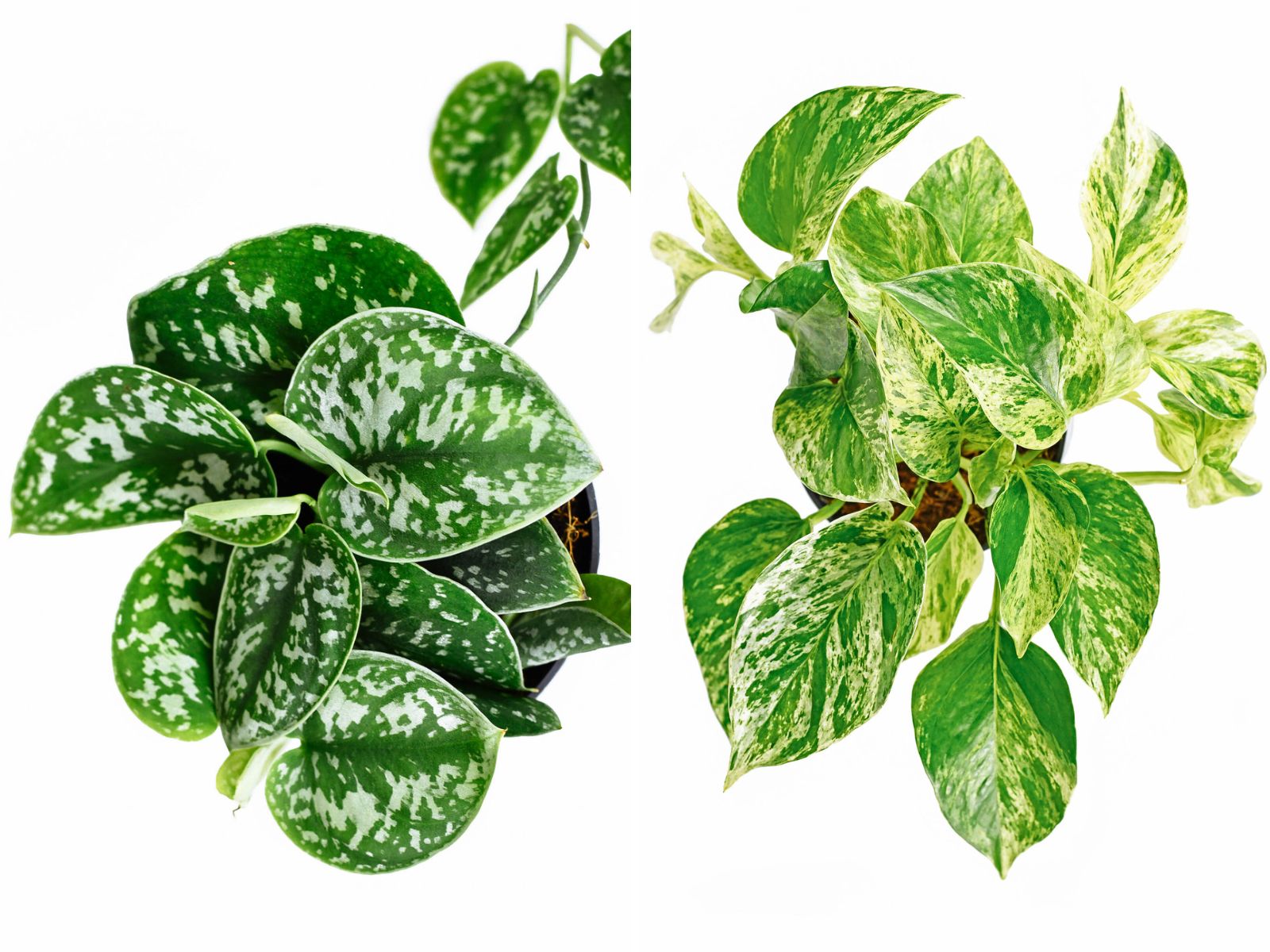
Scindapsus pictus is known for its slightly velvety leaf texture, while Pothos leaves are smoother and sometimes even lightly shiny. Additionally, variegation (mottling) on Scindapsus leaves is silvery in color, while on a golden Pothos, as the name suggests, it’s yellowish or cream.
Scindapsus vs. heartleaf Philodendron
Another common houseplant that’s often confused with Scindapsus pictus is the heartleaf Philodendron, scientifically known as Philodendron hederaceum (although it sometimes goes by its synonym, Philodendron scandens). Remember, despite the fact that Scindapsus is often referred to as silver Philodendron, it’s not a Philodendron at all.
Although both are vining plants, you should be able to tell these two apart by looking at the foliage, just as with Pothos.
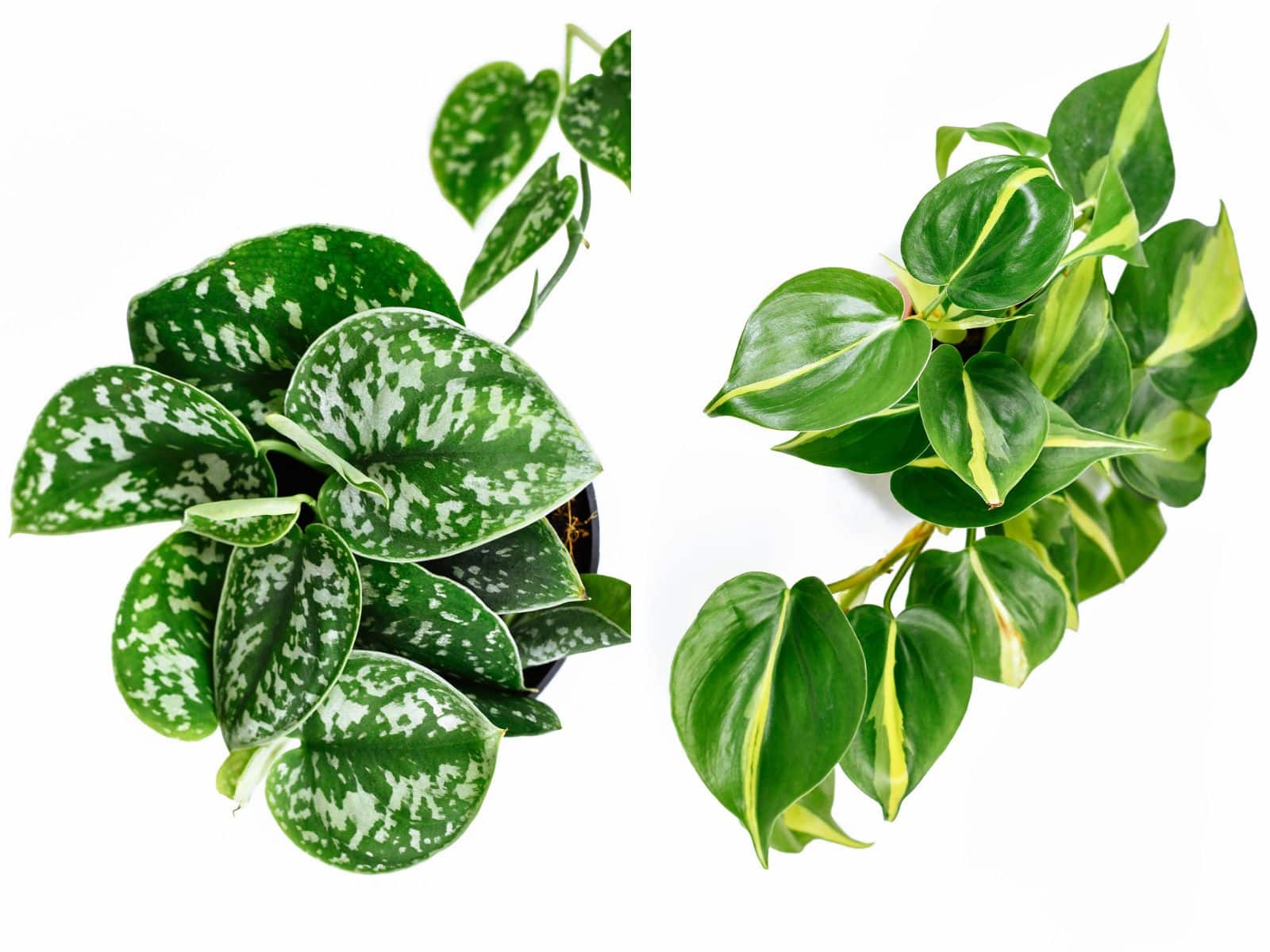
As the name ‘heartleaf’ suggests, the Philo’s leaves are distinctly heart-shaped, and they’re pointier than any of the Scindapsus cultivars’ foliage. They’re also shiny rather than satiny, and they lack the silver splotches you’ll see on Scindapsus. Any variegation will be yellow or cream-colored.
Did you know? Philodendron hederaceum itself is sometimes confused with another Philo species called Philodendron cordatum. Both are often referred to as heartleaf Philodendron, and they’re very similar in looks. For now, just remember that if the scientific (not common) name mentions ‘Philodendron’, you’re NOT dealing with a Scindapsus pictus.
Scindapsus pictus varieties
As with many other popular houseplants, Scindapsus pictus has been selectively cultivated by nurseries to produce all sorts of different-looking varieties. These are known as cultivars, and there are a good few you may come across in your local plant store:
- Scindapsus pictus ‘Silvery Ann’: Medium-sized leaves that are partially speckled, but also have larger patches of silver.
- Scindapsus pictus ‘Silver Splash’: Medium-sized leaves with extensive silver variegation that almost looks pixelated or applied with a paintbrush.
- Scindapsus pictus ‘Exotica’: Large leaves with a green midrib and a lot of silver coloration, with solid areas that feather into speckling.
- Scindapsus pictus ‘Argyraeus’: One of the original and common Scindapsus pictus varieties, with small leaves that are largely green with some silver speckling.
- Scindapsus pictus ‘Jade Satin’: A cultivar with fully green leaves. There’s also a ‘Dark Jade Satin’, and, confusingly, even variegated forms with cream marbling.
- Scindapsus pictus ‘Silver Lady’: Medium-sized leaves with even green and silver coloration, almost like a camouflage pattern.
- Scindapsus pictus ‘Tricolor’: One of the ‘fancier’ Scindapsus pictus varieties, with both light green and silver variegation.
- Scindapsus pictus ‘Silver Hero’: (Almost) fully silver leaves.
- Scindapsus pictus ‘Mayari’: If you have a couple hundred dollars lying around, you can own this variety, which sports regular S. pictus leaf coloration interspersed with large blocks of cream.
Did you know? Scindapsus pictus isn’t the only member of its genus often grown as a houseplant. Recently, its cousin Scindapsus treubii has been gaining massive popularity. Check out S. treubii ‘Sterling Silver’, ‘Moonlight’, ‘Dark Form’ and other cultivars for more additions to your vining houseplant collection.
Where to buy Scindapsus pictus plants:
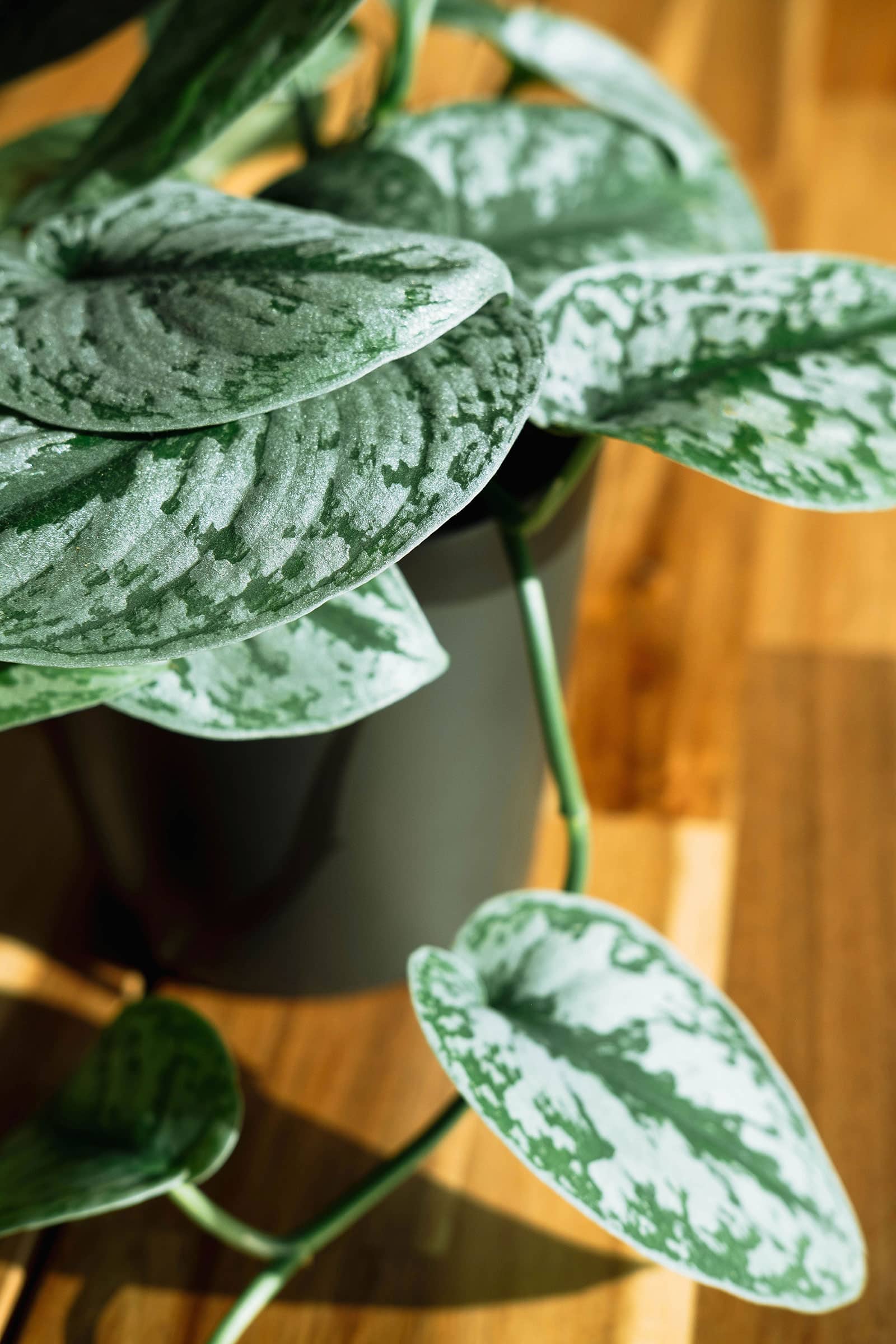
Caring for Scindapsus pictus
Light and temperature
Light tends to be relatively scarce in this plant’s natural habitat due to taller trees blocking out the sun, which is the reason why it evolved to develop its natural climbing growth pattern in the first place.
In the home, this means it doesn’t need loads of light to thrive. In fact, if you expose a satin Pothos to direct sunlight without letting it acclimate first, the leaves are likely to burn!
Although it’s still a good idea to place your Scindapsus pictus close to a window, it’s fine if it’s not the brightest. If you don’t have any window space to spare, you could also consider using a grow light. This species grows fine under artificial light, which is also one of the reasons you’ll see it used in offices and malls sometimes.
Southeast Asian rainforests are pretty warm and humid environments. You don’t need a greenhouse for a home if you’d like to grow this houseplant, but it’s important to avoid exposing it to cold. Keep it away from drafty windows, ideally at a temperature of 59°F or up. Room temperature is fine.
Water and humidity
One of the nice things about Scindapsus pictus is that, although it likes its soil lightly moist, it’s not too fussy. I can’t tell you how often you should water yours, as that depends on factors like light, temperature, and the soil mix you’re using, but luckily it’s easy enough to figure it out by yourself.
To see if your Scindapsus pictus needs a drink, check how wet or dry the soil is. The easiest way is to just stick your finger in the planter: If the top layer of soil feels dry, you can give your plant a drink. If it’s still damp, wait a little longer to prevent root rot.
Your mileage may vary, but generally speaking, you’ll probably end up watering a little more than once a week during the summer growing months and about once every 10 to 12 days in winter.
As for humidity, although this species is a tropical, it should do fine in your home unless things get really dry. If the humidity levels regularly drop below 40 percent, your houseplants in general may benefit from the use of a humidifier.
Soil and planting
Like most Aroids, Scindapsus pictus will appreciate a relatively airy soil. The mixture should hold some moisture, but excess water needs to be able to drain freely. After all, although these plants like a drink, their roots become susceptible to rot if they’re constantly submerged.
If you have an Aroid soil mix on hand, you can use that. If not, making your own satin Pothos soil is as easy as mixing a normal houseplant potting soil with around 20 percent perlite.
If you feel like the mixture dries too quickly, add some coco coir or sphagnum moss; if it stays wet for too long, try adding some fine orchid bark for better drainage.
When it comes to planting, as mentioned, you’ve got a few different options. First and foremost, be sure to always use a planter with a drainage hole. You can go for a hanging pot if you like the “waterfall” look on a plant, or let your Scindapsus pictus climb a plant totem if you want it to grow tall and produce large leaves.
I haven’t tried this myself, but it’s also possible to get a Scindapsus pictus to display its natural shingling growth pattern. Supposedly, growing it in a high-humidity environment like a greenhouse and providing it with a slightly porous surface to press onto helps.
Recommended products for Scindapsus pictus plant care:
- Soil Sunrise Philodendron Houseplant Potting Soil
- Perfect Plants Organic Perlite
- Burpee Organic Coconut Coir
- Better-Gro Orchid Moss
- Totem Monkey Extendable Coir Moss Poles
Fertilizing
If your Scindapsus pictus is chugging along nicely during the summer growing season, you can apply a normal liquid houseplant fertilizer on a monthly basis to further boost its growth. They’re not heavy feeders, but they do benefit from the application of some extra nutrients from time to time.
Be sure not to use fertilizer if your plant is inactive (during the winter months) or not doing well. It won’t be able to take up the nutrients, and they will end up damaging the roots rather than stimulating growth.
Recommended fertilizers for Scindapsus pictus:
- Elm Dirt Plant Juice Organic Fertilizer
- Houseplant Resource Center Liquid Fertilizer for Houseplants
- Instant Biologics Instant Plant Food (Fizzing Nutrient Tablets)
Pruning
Scindapsus pictus plants grown on a totem usually don’t have to be pruned, except maybe to remove the occasional dead leaf.
If you have yours in a hanging planter, it can sometimes eventually begin to look a little scarce. Taking cuttings and placing them back in the same pot can help with maintaining a full look.
Dividing or repotting
In most cases, if you buy a silver Philodendron, it will consist of several rooted stems placed in the same planter. This means that, if you wish, you can divide it into several plants.
However, this isn’t really commonly done. Most people like a full look on their plant, and it’s so easy to take stem cuttings that division is really not needed anyway.
As such, if your Scindapsus pictus outgrows its planter, it’s usually preferable to just repot it. You can do so during springtime, moving up one pot size; be sure to give your plant some fresh soil as well.

Propagating Scindapsus pictus
As mentioned, propagating the vining Scindapsus pictus is a breeze. Even if you’ve never propagated a houseplant before, you should be able to multiply your satin Pothos without issue!
After all, each piece of stem with at least one eye (growth node) and a leaf or two can be rooted to create a whole new plant.
To propagate your Scindapsus, snip one or more sections of at least around 3 to 4 inches off the end of a stem. Remove the cutting’s bottom leaves and submerge part of the stem in water to root, or just pop it directly into some well-draining soil.
Keep lightly moist and you should hopefully see the first new leaves appear in a few weeks, although it can be a little longer during winter.
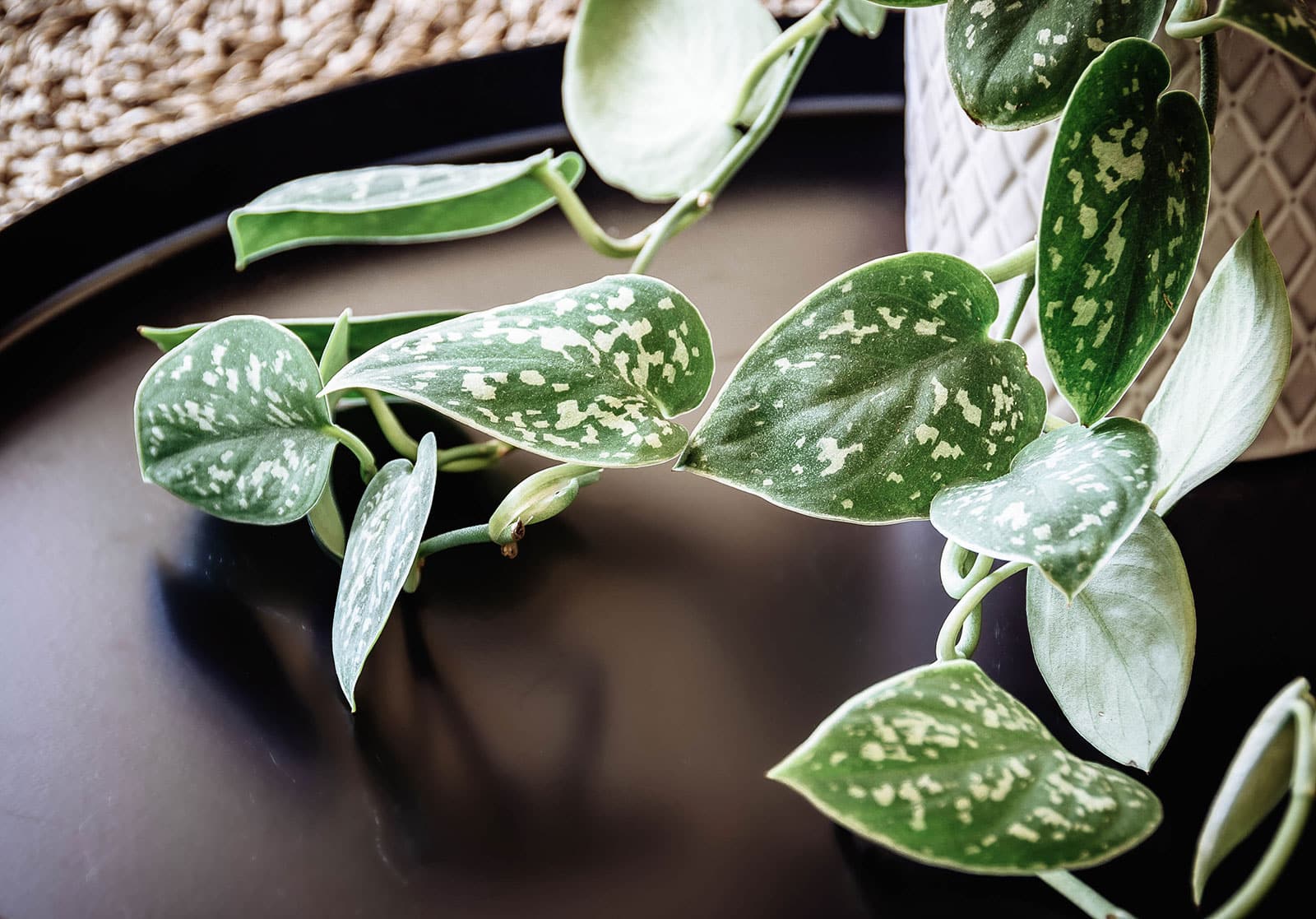
Is Scindapsus pictus toxic to cats and dogs?
No pet is going to drop dead as a result of nibbling a Scindapsus pictus leaf or two. Technically, though, the species is considered lightly toxic. It contains microscopic calcium oxalate crystals that cause irritation to the lips, mouth, and throat.
If you think your furry friend has munched your satin Pothos, offer plenty of water and keep an eye out for any swelling.


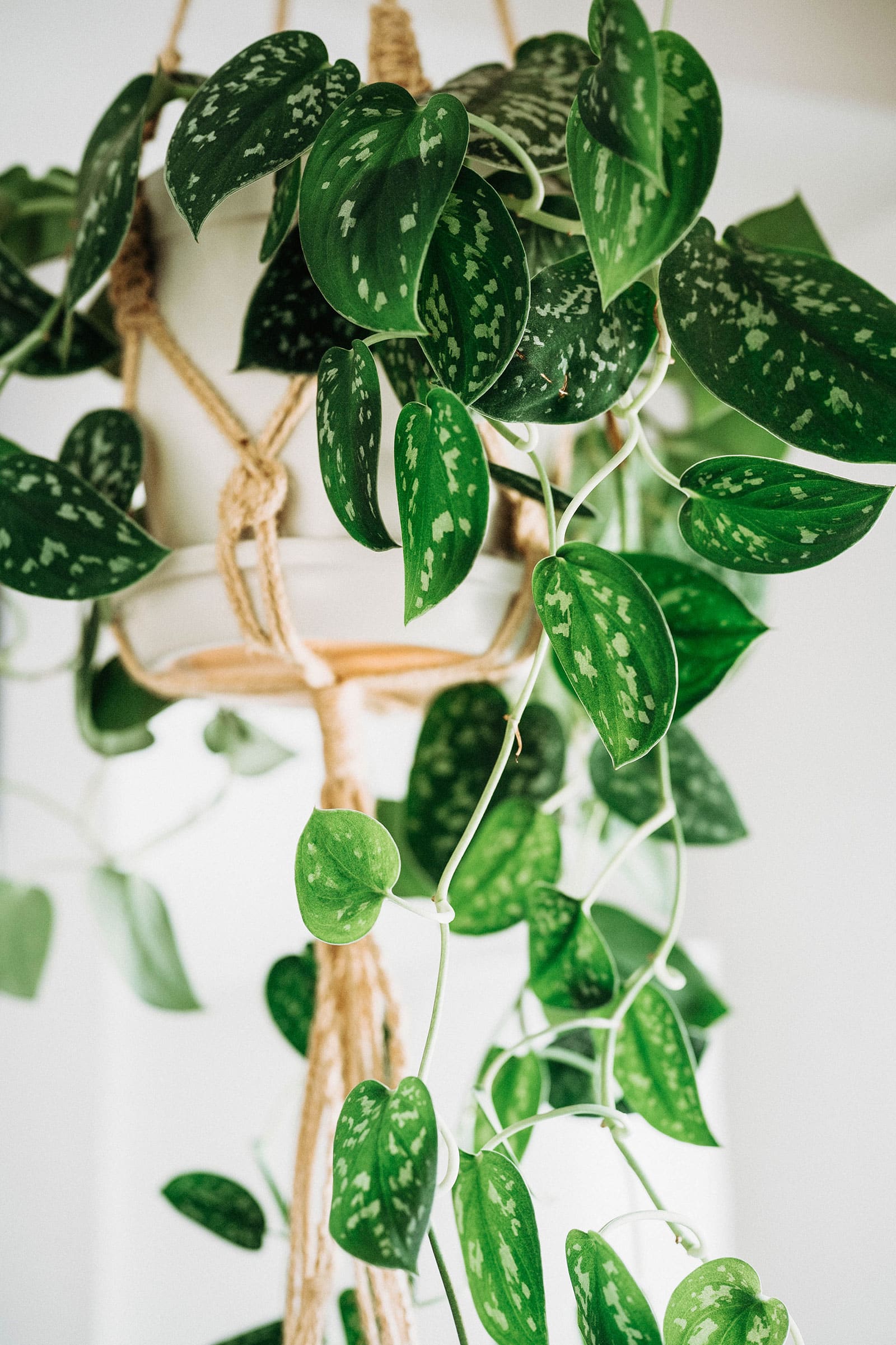













leaves are folding. what is the reason?